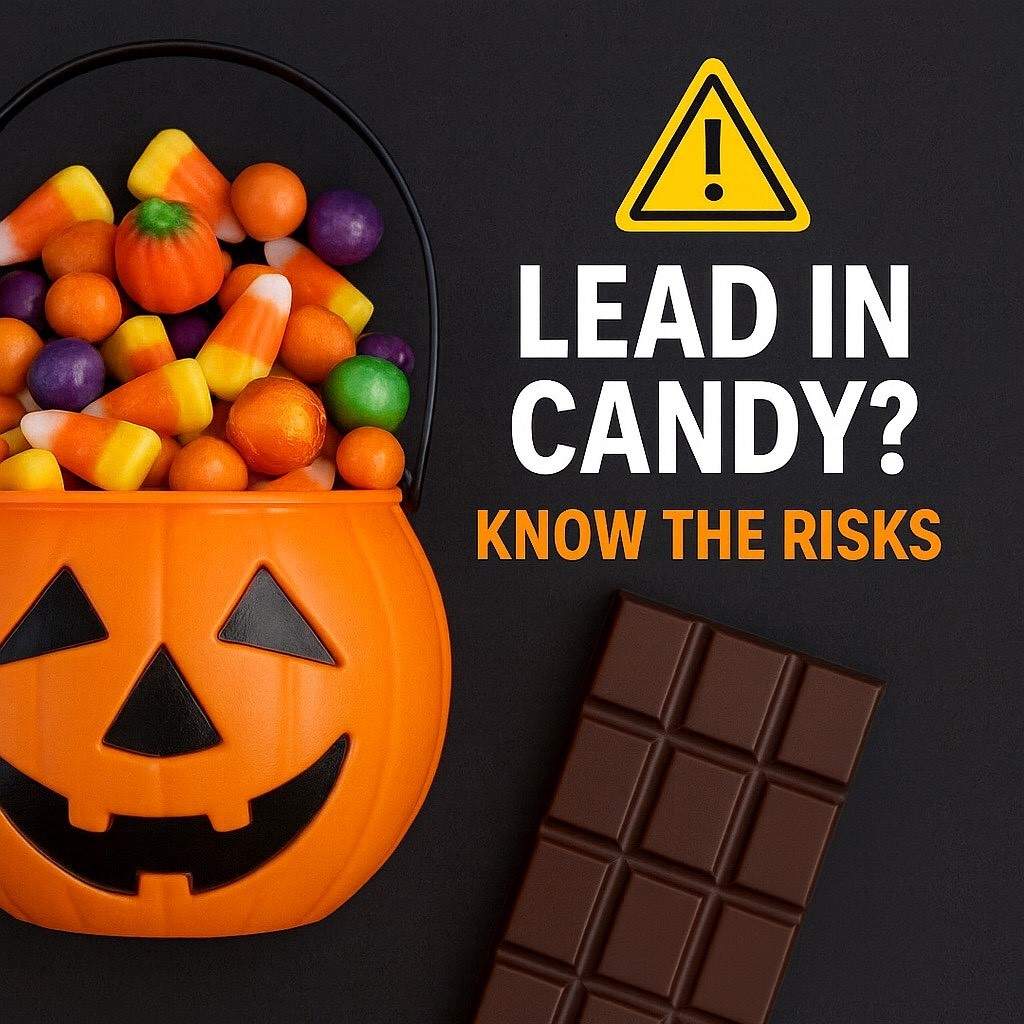Karl Environmental Group • Halloween Safety Brief
Halloween is the season of costumes, pumpkins, and candy. But behind the fun, there’s a serious concern every parent should know: some candies may contain lead.
Dark Chocolate: A Bitter Surprise
Dark chocolate is often seen as the “healthier” choice compared to milk chocolate or sugary sweets. However, recent studies have found that many dark chocolate bars contain measurable amounts of lead and cadmium—both heavy metals that can harm human health.
Independent testing between 2014–2022 found over 40% of dark chocolate products exceeded recommended levels for lead.
The metals may come from soil where cacao is grown, but also from processing and drying practices, where lead dust can contaminate beans.
Even popular and “clean label” brands have been flagged—reminding us that lead contamination doesn’t always come from cheap or off-brand candy.
For adults, the occasional piece of dark chocolate may not pose significant risk. But for children, who are more vulnerable to the effects of lead, even small exposures can matter—especially during Halloween when candy consumption spikes.
Imported Candies & Spices
Dark chocolate isn’t the only concern. Imported candies, especially those containing tamarind, chili powder, or cinnamon, have also been found to carry unsafe levels of lead.
Some Mexican candies flavored with tamarind and chili were pulled from store shelves after testing high for lead.
Cinnamon was identified as the source of contamination in recent fruit purée pouch recalls.
Wrappers and packaging from certain imports have also been linked to lead transfer.
These exposures often come from soil contamination, manufacturing processes, or packaging inks—hidden hazards most parents wouldn’t expect in their child’s treat bag.
Why This Matters
There is no safe level of lead exposure for children. Even small amounts can affect:
- Brain development and learning
- Behavior and attention
- Growth and overall health
Lead exposure builds up over time, which makes monitoring food sources especially important.
Tips for a Safe Halloween
- Choose trusted brands — Stick with companies that follow U.S. food safety standards.
- Limit dark chocolate intake for kids — Small amounts are fine, but don’t let it be the main candy choice.
- Check recalls — Use Google to get an updated lists of products pulled for lead contamination.
- Teach kids safe habits — No eating unwrapped or suspicious-looking treats.
Final Word
Halloween should be about fun, not fear. While it’s impossible to eliminate every risk, being aware of concerns like lead in dark chocolate and imported candies helps parents make safer choices.
At Karl Environmental, we believe knowledge is the best defense. This Halloween, keep the costumes spooky and the candy safe!
__________________________________________________________________________
Have a concern about potential lead exposure at home, in schools, or on a job site?
Karl Environmental Group can help with testing, remediation planning, and regulatory guidance.
Call: (610) 856-7700 • Email:
Note: This article is informational and not a substitute for medical or regulatory advice. Always consult your pediatrician and check official recalls before making decisions.

